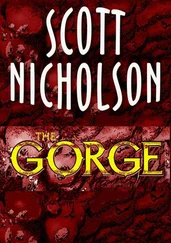“Yes?” she said, in an annoyed tone, looking up from her laptop. She’d confided to Daniel that she was having “family problems,” and Daniel had projected a polite pretense of concern without pressing for details. Which meant avoiding her unless something important was happening.
“It looks like some irregular plasma activity.”
“We’re in an irregular phase,” she said, not clicking away from whatever she was working on. “The moon’s having its period.”
Much like a woman, or the moon, or any other natural object, the sun went through nearly predictable cycles of behavior. Solar cycles lasted about 11 years, and the study of radionuclides in Arctic ice had allowed researchers to map an accurate history of the sun. Although the cycles followed identifiable patterns, the general agreement was that the current cycle was among the most active on record.
“It’s not just regularly irregular,” he said. “It’s crazy.”
“Ah, here comes the big one, huh?” Katherine teased. “Guess they should have listened to you, huh?”
As a member of a commission asked to assess the nation’s vulnerability to electromagnetic pulse attack, Chien had testified before an Armed Services subcommittee. He’d warned of the impact of massive solar flares, but his cataclysmic scenarios were pushed aside for what were considered the more-relevant dangers of low-flying nuclear missiles. The military couldn’t fight the sun, and neither could it procure billions of tax dollars by provoking the administration’s fear of the sun. Besides, terrorist threats were far sexier than probability modeling.
Last year, Chien had co-authored a report that painted a grim picture of infrastructure failure on the heels of a massive solar storm, calling it “the greatest environmental disaster in human history.” Since then, Katherine and the other SDO researchers had wryly called Chien “Dr. Doom.”
Chien had stood firm in his quiet way. Besides, it really wasn’t a matter of “if.” It was a matter of “when.”
But even Chien didn’t really expect “when” to be now .
“Look at AR1654,” Chien said.
Katherine’s keys clacked as she brought up an image on her laptop screen. “It’s only an M-1,” she said. “At worst, we could get a few radio blackouts in the polar regions. No biggie.”
“But AR1654 is aligning with the Earth. That means we will be right in the path of the plasma stream if a flare erupts.”
“And it will pass right over us. That’s why we have an atmosphere, so we’re not exposed to constant radiation. Otherwise, we wouldn’t be around to have this conversation.”
Katherine, apparently satisfied with her prognosis, resumed typing. Chien watched the image on the screen for another minute, as sauce leaked from the edge of the pizza’s crust and bulged out into space in huge, curling ribbons.
Maybe I’m no different than Newton, a sensationalistic glory hound. But he died a virgin, so I’ve got him beat there .
Chien went through the rote recording of data that occupied much of his duties, but his mind wandered to Summer Hanratty, the woman he’d been dating for the last six months. He couldn’t escape the irony of her first name, and its connotation with sunny weather had fueled their initial conversation at a colleague’s party. Maybe they were getting serious.
Heating up, huh? Well, even Dr. Doom needs a little comfort in the night.
Katherine’s clipped voice interrupted his reverie. “Did you see that?”
“See what?” Chien had flipped away from the satellite imagery to tables of temperature, X-rays, and magnetic energy.
“Check the Magnetogram,” she said, referring to the telescopic image that mapped the magnetic energy along the sun’s surface.
Chien summoned the proper screen, which now showed the solar pizza as a mossy tennis ball pocked with violent orange and cobalt-blue acne. The area near AR1654 showed a brilliant plume erupting from the surface.
“It will loop,” Chien said, referring to the sun’s habit of bending much of its escaped energy back into the thermonuclear maw. As turbulent as the imagery made the sun appear, most of the activity took place deep inside, where hydrogen and helium burned away at astonishing temperatures. It took light 200,000 years to emerge from the center of the sun to the surface, and from there a mere eight minutes to reach the Earth.
Chien thought he would share that little factoid with Summer when he dropped by her apartment tonight. It was the kind of romantic bon mot that would wash down well with a glass of Chablis.
“Even with a loop, it will likely shoot some electrons our way,” Katherine said.
“Should we log a report?”
One of the center’s responsibilities was to warn of potential interference with satellites and telecommunications equipment, which helped justify the $18 billion NASA budget. A caricature of a notoriously penurious Republican senator was pinned to the bulletin board near the restrooms, with a handwritten admonition: “A phone call a day keeps the hatchets away.” Providing a practical public benefit was essential to the long-term survival of the center.
“The usual,” Katherine said. “Possible disruption of regular signal transmission but no need for extraordinary measures.”
“A little static on the cell phone,” Chien said. “A little snow for the TV viewers with a dish. No Doomsday on the radar.”
“Don’t sound so disappointed.”
“I’m thrilled. An apocalypse would be terribly inconvenient. I’ve got a hot date tonight.”
Katherine managed a rueful smile. “Wish I could say the same. Take my advice and never get married.”
Chien didn’t want to tiptoe through those conversational landmines, so he shifted back to business. The bulging projectile of the solar flare clung to the sun’s surface like a drop of water on the lip of a leaky faucet. Usually, the flare would collapse again, the charged particles of helium and hydrogen reeled back by the intense gravity. But this one kept swelling, a ragged dragon’s breath of plasma leaping into space.
Chien flipped through the suite of instruments, observing the flare at different wavelengths. “Are you seeing this, Katherine?”
“Let me get this bulletin out first.”
“I’d hold off on it for a moment. We might be upgrading.”
“We can’t upgrade. This is M-1 already.”
Chien’s mouth went dry and his heart hammered. The solar flare’s footprint grew both on the surface and in its bulge in the heliosphere. “Looking like an X.”
“Daniel, that’s serious. It means rerouting high-altitude aircraft and damage to satellites. If we send out a red alert, we’d better be right.”
“The sun doesn’t care who’s right or wrong,” he said, watching the ragged hole on the sun’s surface widen further and the plume take an immense leap.
X-class solar flares dispensed radiation that could threaten airline passengers with exposure if they were not adequately shielded by the Earth’s atmosphere. Such flares were rarely recorded, but Chien was well aware that human measurement of such phenomena was but the blink of an eye against the ancient history of the sun. No doubt thousands—perhaps millions—of massive flares had swept across the Earth in ages past, scouring the planet with radiation and scrambling its geomagnetic fields. Chien was alternately excited and frightened that he might be witness to one of them.
But Katherine was right. Issuing an X-class bulletin would set a whole range of actions in motion, affecting the telecommunications industry, defense, and air transportation. Rerouting flights alone would cost millions of dollars, not to mention throwing off flight schedules that could disrupt international travel for weeks. Any shutdown of telecommunications and satellite service could quickly run to costs in the billions as well. This was a panic button that, once pressed, could not be easily dismissed.
Читать дальше












